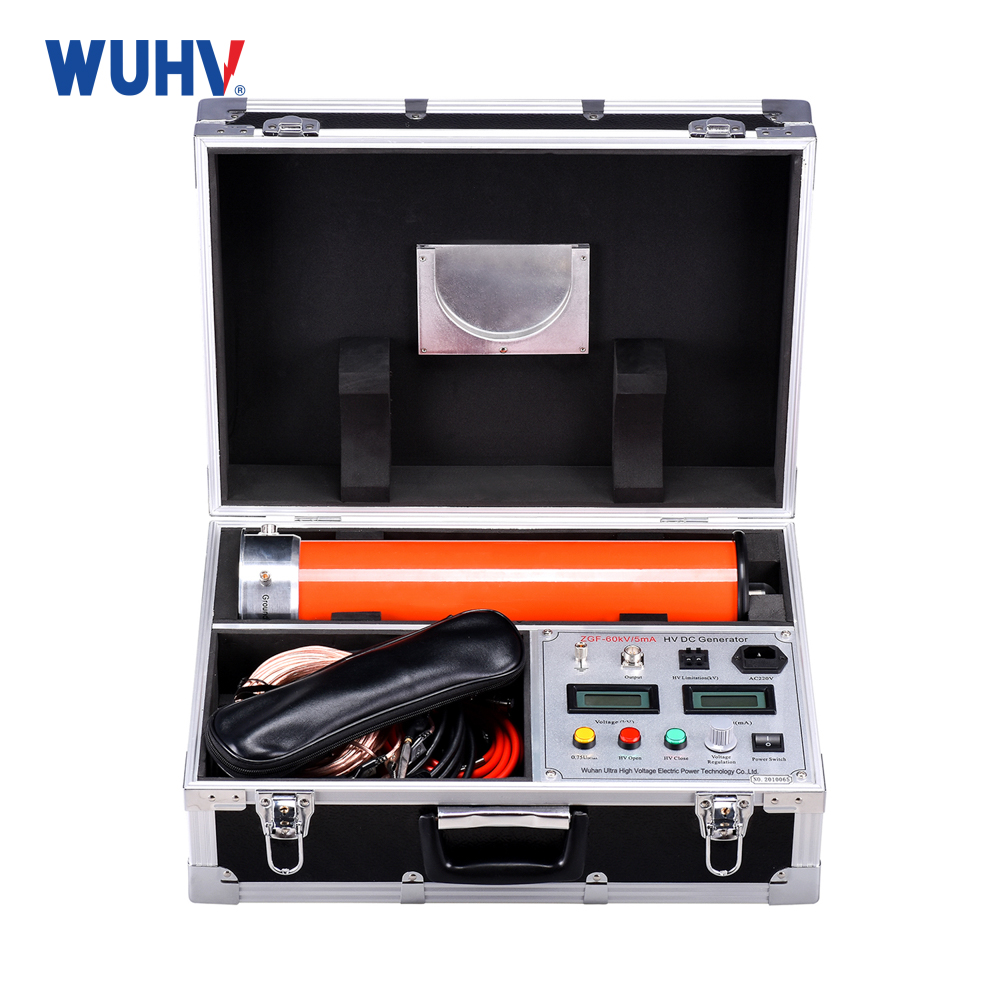The cable fault tester under UHV power can help many power workers conduct various power tests more conveniently.

1、 Reasons for moisture or water ingress in polyethylene insulated cables.
Moisture or moisture enters the insulation layer of cross-linked polyethylene insulated power cables during laying, installation, and operation. There are mainly the following situations
1. The cable end cover is not tightly sealed, or the cable is damaged by external forces during transportation and laying.
During the transportation or laying of cables, the cable protective layer is damaged by external forces.
3. Cable insulation breakdown damages the cable sheath during cable testing or operation.
4. Cable accessories (especially intermediate joints directly buried) are not tightly sealed. Once moisture or moisture enters the cable insulation from the end of the cable or the outer protective layer of the cable, it may penetrate longitudinally through the copper wire shielding gap or conductor gap outside the insulation, thereby endangering the entire cable system.
Under the action of high electric fields, cables that have been dampened will produce a "water tree" phenomenon, which reduces the insulation performance of cross-linked polyethylene and ultimately leads to cable insulation breakdown. Therefore, wet cables must undergo dehumidification treatment. At present, there is no standardized operating method for dehumidification treatment of wet cables, and there is no unified evaluation standard for the results of dehumidification treatment. The following introduces a method and steps for cable dehumidification.
2、 The principle of dehumidification treatment is to use compressed gas medium at one end of the cable. In 2004, when our company was searching for cable grounding faults, we usually analyzed four dry cases and tested the B-phase resistance with a vibration meter to determine that it was a unidirectional grounding fault. The cable is 450 meters long and uses the above-mentioned low-voltage pulse, which is a low resistance fault.
The intermediate measurement method can directly calculate the distance between the fault point and the testing end. By selecting cable parameters, use a testing instrument to identify a fault in the cable head. It only takes 30 minutes from testing to discovering the fault, saving repair time and reducing losses.
In many projects, the use of wires and cables is essential. Power cables, especially polyethylene insulated power cables, have been widely used. However, due to the special nature of cables, there are special requirements for their installation, operation, and maintenance. The decrease in insulation resistance of cables caused by moisture or water ingress is one of the important aspects of cable line operation accidents.
(1) Reasons for moisture or water ingress in polyethylene insulated cables.
Moisture or moisture enters the insulation layer of cross-linked polyethylene insulated power cables during laying, installation, and operation. There are mainly the following situations. (1) The cable end cover is not tightly sealed, or the cable is damaged by external forces during transportation and laying.
During the transportation or laying of cables, the cable protective layer is damaged by external forces.
3. Cable insulation breakdown damages the cable sheath during cable testing or operation.
4. Cable accessories (especially intermediate joints directly buried) are not tightly sealed. Once moisture or moisture enters the cable insulation from the end of the cable or the outer protective layer of the cable, it may penetrate longitudinally through the copper wire shielding gap or conductor gap outside the insulation, thereby endangering the entire cable system.
Under the action of high electric fields, cables that have been dampened will produce a "water tree" phenomenon, which reduces the insulation performance of cross-linked polyethylene and ultimately leads to cable insulation breakdown. Therefore, wet cables must undergo dehumidification treatment. At present, there is no standardized operating method for dehumidification treatment of wet cables, and there is no unified evaluation standard for the results of dehumidification treatment. The following introduces a method and steps for cable dehumidification.
(2) The principle of dehumidification treatment is to use compressed gas medium at one end of the cable. In 2004, when our company was searching for cable grounding faults, we usually analyzed four dry cases and tested the B-phase resistance with a vibration meter to determine that it was a unidirectional grounding fault. The cable is 450 meters long and uses the above-mentioned low-voltage pulse, which is a low resistance fault.
The intermediate measurement method can directly calculate the distance between the fault point and the testing end. By selecting cable parameters, use a testing instrument to identify a fault in the cable head. It only takes 30 minutes from testing to discovering the fault, saving repair time and reducing losses.



















